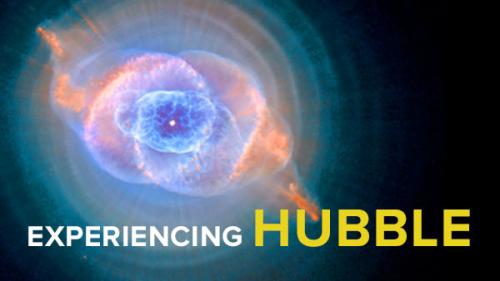Categories: Tutorials

TheGreatCoursesPlus - Experiencing Hubble: Understanding the Greatest Images of the Universe
Marvel at landmark images from the Hubble Space Telescope and better understand astronomy's latest and greatest discoveries in this visual feast of a course.
1: The Rationale for a Space Telescope
- Begin your exploration of the scientific stories behind 10 of the most fascinating images made by the Hubble Space Telescope. In this lecture, learn about Hubble's design and how its operations were almost cut short by a flaw in its mirror, a problem corrected during a space shuttle servicing mission.
2: Comet Shoemaker-Levy 9 and Jupiter
- Shortly after its optics were repaired, Hubble had the opportunity to observe the solar system event of the century: the collision of a string of comets with Jupiter in 1994. Examine Hubble's stunning image of the aftermath of this crash.
3: The Sagittarius Star Cloud
- Hubble's view of a tiny region of the Sagittarius Star Cloud has an astonishing 12,000 stars. Study this dazzling image and learn how its unprecedented resolution is helping to chart the stellar history and evolution of the Milky Way galaxy.
4: The Star Factory inside the Eagle Nebula
- Explore the most iconic Hubble photo of all: the glowing pillars of gas and dust at the core of the Eagle Nebula. Resembling a fantasy landscape, this view shows young stars emerging from their cocoons of gas and dust in an interstellar molecular cloud.
5: The Cat's Eye Nebula-A Stellar Demise
- Turning from star birth to star death, get a preview of the sun's distant future by examining the Cat's Eye Nebulae. Such planetary nebulae (which have nothing to do with planets) are the exposed debris of dying stars and are among the most beautiful objects in the Hubble gallery.
6: The Crab Nebula-A Supernova's Aftermath
- Stars more than eight times as massive as the sun take a radically different path at the end of their lives, disintegrating in a colossal explosion known as a supernova. Hubble's image of the famous Crab Nebula shows the expanding cloud of material from a supernova that was witnessed on Earth in the year 1054.
7: The Sombrero Galaxy-An Island Universe
- In the 1920s, astronomer Edwin Hubble discovered the true nature of galaxies as "island universes." Some 80 years later, the telescope named in his honor has made thousands of breathtaking pictures of galaxies. Focus on one in particular-an edge-on view of the striking Sombrero galaxy.
8: Hubble's View of Galaxies Near and Far
- Hubble's image of the nearby galaxy NGC 3370 includes many faint galaxies in the background, exemplifying the telescope's mission to establish an accurate distance scale to galaxies near and far-along with the related expansion rate of the universe. Discover how Hubble's success has led to the concept of dark energy.
9: The Antennae Galaxies-A Cosmic Collision
- A pair of interacting galaxies called the Antennae represent Hubble's most dramatic snapshot of a galactic collision. Learn how such events unfold over the course of millions of years and how the nearby Andromeda galaxy will have a similar encounter with our own Milky Way in the far distant future.
10: Abell 2218-A Massive Gravitational Lens
- One of the consequences of Einstein's general theory of relativity is evident in Hubble's picture of the galaxy cluster Abell 2218. Investigate the physics of this phenomenon, called gravitational lensing, and discover how Hubble has used it to study extremely distant galaxies as well as dark matter.
11: The Hubble Ultra Deep Field
- Completing your tour of 10 remarkable Hubble images, plunge into the Hubble Ultra Deep Field, the deepest optical image of the cosmos made to date. This extraordinary view shows 10,000 galaxies extending far beyond the Milky Way and back to the epoch of galaxy formation.
12: Hubble's Legacy and Beyond
- Finish the course by looking at the future of Hubble and the next generation of space telescopes. Focus in particular on the search for extrasolar planets, how they are found, and the role Hubble and other telescopes play in extending our knowledge of possibly earthlike worlds.
Related Posts
Information
Members of Guests cannot leave comments.
Top Rated News
- Finding North Photography
- Sean Archer
- John Gress Photography
- Motion Science
- AwTeaches
- Learn Squared
- PhotoWhoa
- Houdini-Course
- Photigy
- August Dering Photography
- StudioGuti
- Creatoom
- Creature Art Teacher
- Creator Foundry
- Patreon Collections
- Udemy - Turkce
- BigFilms
- Jerry Ghionis
- ACIDBITE
- BigMediumSmall
- Boom Library
- Globe Plants
- Unleashed Education
- The School of Photography
- Visual Education
- LeartesStudios - Cosmos
- Fxphd
- All Veer Fancy Collection!
- All OJO Images
- All ZZVe Vectors




 Categories
Categories







